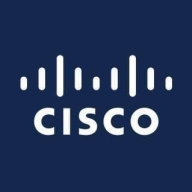
![Threat Stack Cloud Security Platform [EOL] Logo](https://images.peerspot.com/image/upload/c_scale,dpr_3.0,f_auto,q_100,w_64/o0no0it6ybl6satjcxomcblsgmd6.png)
Cisco Sourcefire SNORT and Threat Stack Cloud Security Platform [EOL] compete in the security sector. Cisco Sourcefire SNORT has the upper hand due to its robust pricing and support, although Threat Stack Cloud Security Platform [EOL] is preferred for cloud-native features.
Features: Cisco Sourcefire SNORT offers reliable intrusion detection and prevention, advanced malware protection, and high availability in a single solution. Threat Stack Cloud Security Platform [EOL] excels in cloud security monitoring, compliance features, and automatic learning of traffic patterns.
Room for Improvement: Cisco Sourcefire SNORT could enhance ease of deployment, simplify the integration process, and improve user-friendliness. Threat Stack Cloud Security Platform [EOL] can benefit from expanding container support, strengthening endpoint security, and fine-tuning alert customization capabilities.
Ease of Deployment and Customer Service: Cisco Sourcefire SNORT requires skilled IT support for complex network integration, with effective customer service backing. Threat Stack Cloud Security Platform [EOL] provides an easier cloud-based deployment process, adapting to dynamic environments with responsive customer support.
Pricing and ROI: Cisco Sourcefire SNORT is competitively priced with lower setup costs and delivers ROI through efficient intrusion detection. Threat Stack Cloud Security Platform [EOL] requires a higher upfront investment but offers superior ROI via advanced cloud security and compliance benefits.

| Company Size | Count |
|---|---|
| Small Business | 5 |
| Midsize Enterprise | 8 |
| Large Enterprise | 7 |
| Company Size | Count |
|---|---|
| Small Business | 2 |
| Midsize Enterprise | 5 |
| Large Enterprise | 2 |
Snort is an open-source, rule-based, intrusion detection and prevention system. It combines the benefits of signature-, protocol-, and anomaly-based inspection methods to deliver flexible protection from malware attacks. Snort gained notoriety for being able to accurately detect threats at high speeds.
Threat Stack Cloud Security Platform [EOL] offers robust security features including endpoint monitoring, rule customization, and integration capabilities, with easy connectivity to cloud services like Docker and AWS.
Threat Stack Cloud Security Platform [EOL] provides tools for enhancing security visibility across cloud infrastructure. It supports AWS and Docker integration, facilitating efficient threat detection and management. Users appreciate its capability to configure customizable alerts and monitor endpoints, sessions, API interactions, and cloud services. However, there are areas needing improvement, such as better serverless environment support and reduced alert frequency. The platform services smaller organizations by compensating for limited security resources with its comprehensive monitoring and auditing tools.
What are the key features?In specific industries, Threat Stack Cloud Security Platform [EOL] is utilized for its strength in monitoring cloud infrastructure and preventing unauthorized access. Organizations in fields where cloud operations are critical use it for regular audits and monitoring. Its capabilities in threat management are leveraged to maintain secure operations and compliance, especially where there is no dedicated security team.
We monitor all Intrusion Detection and Prevention Software (IDPS) reviews to prevent fraudulent reviews and keep review quality high. We do not post reviews by company employees or direct competitors. We validate each review for authenticity via cross-reference with LinkedIn, and personal follow-up with the reviewer when necessary.